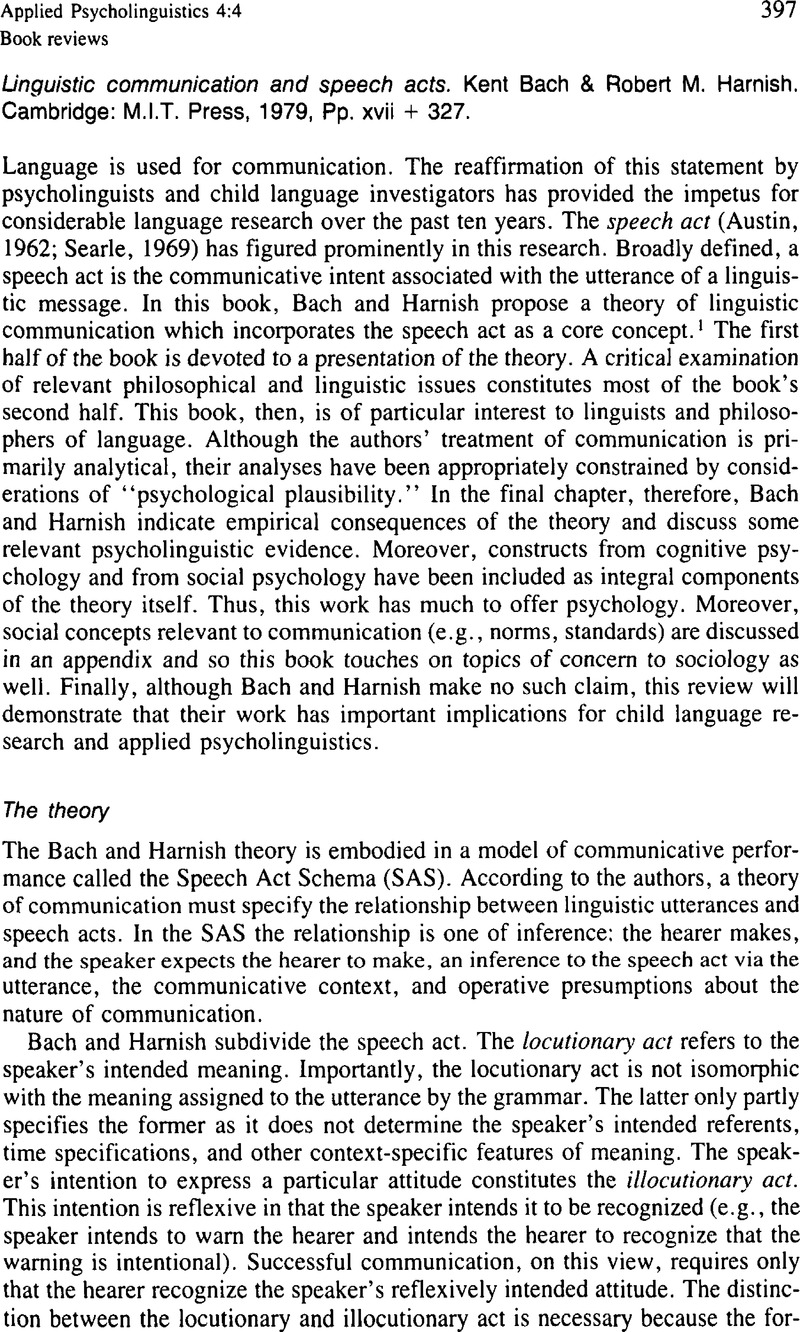Crossref Citations
This article has been cited by the following publications. This list is generated based on data provided by Crossref.
Abbeduto, Leonard
1984.
Situational influences on mentally retarded and nonretarded children's production of directives.
Applied Psycholinguistics,
Vol. 5,
Issue. 2,
p.
147.
Abbeduto, Leonard
Davies, Betty
and
Furman, Laurie
1988.
The Development of Speech Act Comprehension in Mentally Retarded Individuals and Nonretarded Children.
Child Development,
Vol. 59,
Issue. 6,
p.
1460.
Robe, Peter
Kaur Kuttal, Sandeep
Zhang, Yunfeng
and
Bellamy, Rachel
2020.
Can Machine Learning Facilitate Remote Pair Programming? Challenges, Insights & Implications.
p.
1.
Wu, Ting-Wei
and
Juang, Biing-Hwang
2022.
Knowledge Augmented Bert Mutual Network in Multi-Turn Spoken Dialogues.
p.
7487.
Brdar, Mario
Brdar-Szabó, Rita
and
Zayniev, Daler
2024.
Proverbs within Cognitive Linguistics.
Vol. 16,
Issue. ,
p.
40.



